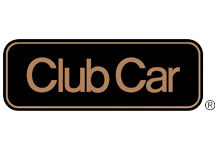The utility segment of the small, task-oriented vehicle market should see significant growth, according to the recently published study of the market by Small Vehicle Resource, LLC. In particular the study indicates gains in the light duty utility segment, contingent on a vigorous pursuit of commercial accounts. This is the segment that is of most interest to golf car manufacturers that are putting increasing emphasis on non-golf related markets.
Two segments, based on price and cargo capacity
The light duty utility segment of the STOV marketplace presents to potential customers a continuum of cost/benefit choices. Looking at two parameters, price and cargo box load capacity, the following tables indicate some of the choices. The first table covers a price range of $4,000-$7,500 and the second, a price range of $7,501-$10,000. The prices for the most part are posted MSRPs. Some prices are estimated from dealer postings on the internet. The prices are base prices in the sense that accessories of various kinds will, in all likelihood, increase the price, sometimes substantially.
The seven representative models in the above price range (arranged by ascending price) have an average price of about $6,670. The standard deviation, that is, a range in which 90% of the prices will fall, is about $940, or 14.1% of the average. This is a fairly sizeable latitude in price. Cargo box capacity averages about 370 lbs., most of the sample at 400 lbs. In this parameter, the standard deviation is 49 lbs., or a little over 13% of the average.
Looking at the cost to the customer per pound of cargo box capacity, and understanding that this is but one of the measures of cost-benefit trade-offs, the average is $18.42 and the standard deviation $4.59—which is 25% of the average. Thus, there is a pretty substantial spread in this cost to benefit measure, suggesting the customer will be looking to compensating enhancements among those vehicles that have a relatively high cost per
pound of cargo box
capacity.
The second set of representative vehicles in the higher price range is seen in the table below (again arranged in ascending order of prices):
Average price among the 14 models is about $8,860, 33% higher than the average price for vehicles in the first table. Cargo box capacity, however, is 70% higher on average, so the cost per cargo box capacity is effectively lower at $16.05 compared to $18.42.
The variation in price within this price range is relatively low: the standard deviation at $567 is 6.4% of the average price, compared to 14.1% for vehicles in the lower price range in the first table. On the other hand, variation in cargo box capacity is quite high with the standard deviation at just under 40% of the average. This translates into a significant variation in cost per pound of cargo box capacity, where the standard deviation is 37% of the average.
Opportunities and challenges in the value gaps
In comparing the two sets of vehicles, it appears to be more difficult to place a superior cost/benefit value in the lower price range. The variation in the cost/benefit ratio is relatively small. Yet the opportunity lies in raising the cargo box capacity, while maintaining price. Then lower price range vehicles begin to encroach on capacity featured in the higher priced models.
In the higher priced vehicles of the second table, the wide variation in cargo box capacity and cost per pound of capacity can be accounted for by the fact that certain of the vehicles in the sample can be classified as “crossovers”, meaning, generally, a crossover from recreational to work utility vehicle; i.e., a combination of features of the two market segments. While the crossover concept is popular, traditional golf car manufacturers would be better served concentrating on work capabilities, which are far more likely to drive this segment than top speeds.
It also noteworthy that while golf car manufacturers have vehicles placed in the higher priced classification, the competition is likely to be better known in markets which demand this type of vehicle—with significant implications for marketing and sales strategies.






















